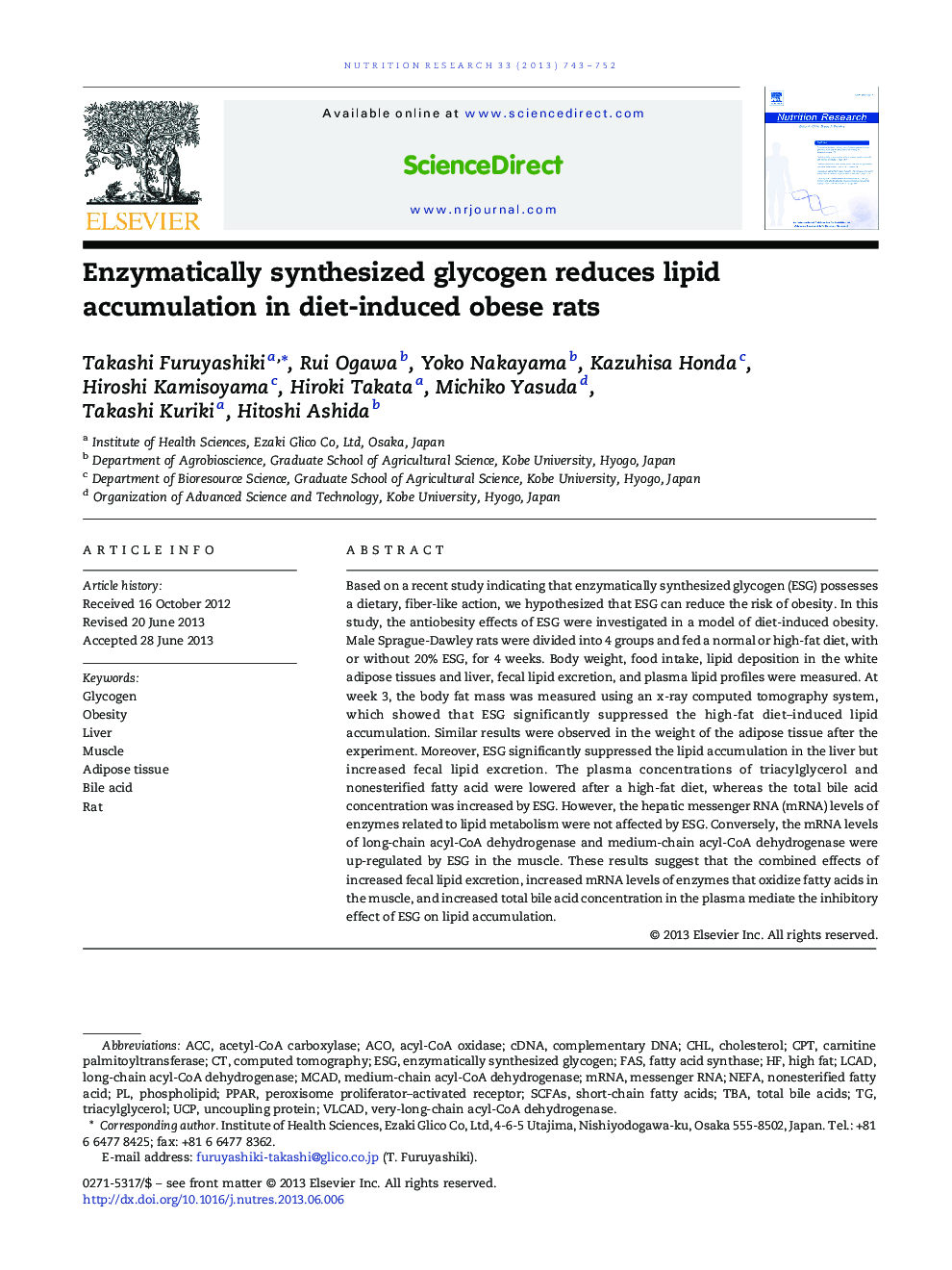| Article ID | Journal | Published Year | Pages | File Type |
|---|---|---|---|---|
| 2809074 | Nutrition Research | 2013 | 10 Pages |
Abstract
Based on a recent study indicating that enzymatically synthesized glycogen (ESG) possesses a dietary, fiber-like action, we hypothesized that ESG can reduce the risk of obesity. In this study, the antiobesity effects of ESG were investigated in a model of diet-induced obesity. Male Sprague-Dawley rats were divided into 4 groups and fed a normal or high-fat diet, with or without 20% ESG, for 4 weeks. Body weight, food intake, lipid deposition in the white adipose tissues and liver, fecal lipid excretion, and plasma lipid profiles were measured. At week 3, the body fat mass was measured using an x-ray computed tomography system, which showed that ESG significantly suppressed the high-fat diet-induced lipid accumulation. Similar results were observed in the weight of the adipose tissue after the experiment. Moreover, ESG significantly suppressed the lipid accumulation in the liver but increased fecal lipid excretion. The plasma concentrations of triacylglycerol and nonesterified fatty acid were lowered after a high-fat diet, whereas the total bile acid concentration was increased by ESG. However, the hepatic messenger RNA (mRNA) levels of enzymes related to lipid metabolism were not affected by ESG. Conversely, the mRNA levels of long-chain acyl-CoA dehydrogenase and medium-chain acyl-CoA dehydrogenase were up-regulated by ESG in the muscle. These results suggest that the combined effects of increased fecal lipid excretion, increased mRNA levels of enzymes that oxidize fatty acids in the muscle, and increased total bile acid concentration in the plasma mediate the inhibitory effect of ESG on lipid accumulation.
Keywords
ACCVLCADLCADUCPMCADesgacyl-CoA oxidaseNEFAPPARSCFAsChlACOFASTBAmRNACPTcDNAComplementary DNAmessenger RNAacetyl-CoA carboxylaseBile acidfatty acid synthasenonesterified fatty acidtotal bile acidsShort-chain fatty acidsAdipose tissuetriacylglycerolcomputed tomographyVery-long-chain acyl-CoA dehydrogenaseMedium-chain acyl-CoA dehydrogenaseLong-chain acyl-CoA dehydrogenaseMusclePhospholipidObesityRatUncoupling proteinhigh fatCarnitine palmitoyltransferaseLivercholesterolGlycogenPeroxisome proliferator–activated receptor
Related Topics
Life Sciences
Biochemistry, Genetics and Molecular Biology
Endocrinology
Authors
Takashi Furuyashiki, Rui Ogawa, Yoko Nakayama, Kazuhisa Honda, Hiroshi Kamisoyama, Hiroki Takata, Michiko Yasuda, Takashi Kuriki, Hitoshi Ashida,
